


C57BL/6-Tigittm1(TIGIT)Bcgen/Bcgen • 110017
| Product name | B-hTIGIT mice |
|---|---|
| Catalog number | 110017 |
| Strain name | C57BL/6-Tigittm1(TIGIT)Bcgen/Bcgen |
| Strain background | C57BL/6 |
| NCBI gene ID | 100043314 |
| Aliases | TIGIT(T cell immunoreceptor with Ig and ITIM domains) |
Gene targeting strategy for B-hTIGIT mice. The exon 2 of mouse Tigit gene that encode the extracellular domain was replaced by human TIGIT exon 2 in B-hTIGIT mice.
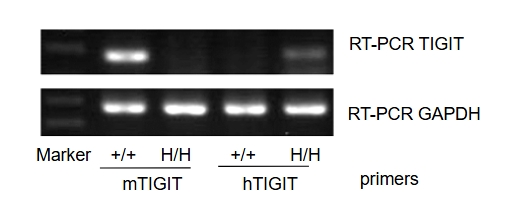
Strain specific analysis of TIGIT gene expression in WT and hTIGIT mice by RT-PCR. Mouse Tigit mRNA was detected in splenocytes of wild-type (+/+). Human TIGIT mRNA was detected only in homozygous B-hTIGIT mice (H/H), but not in WT mice.
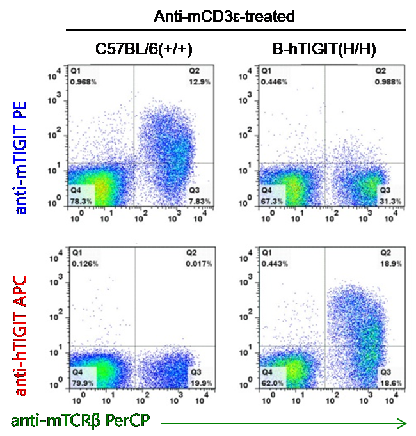
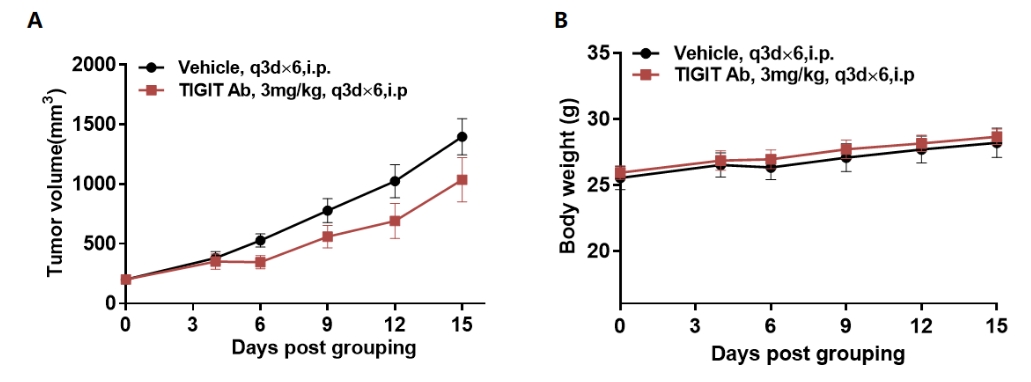
Antitumor activity of anti-human TIGIT antibody in B-hTIGIT mice. (A) Anti-human TIGIT antibody inhibited MC38 tumor growth in B-hTIGIT mice. Murine colon cancer MC38 cells (5ⅹ105) were subcutaneously implanted into homozygous B-hTIGIT mice (male, 4-6 week-old, n=5). Mice were grouped when tumor volume reached approximately 150±50 mm3, at which time they were treated with anti-human TIGIT antibody and schedules indicated in panel. (B) Body weight changes during treatment. As shown in panel A, anti-human TIGIT antibody was efficacious in controlling tumor growth in B-hTIGIT mice, demonstrating that the B-hTIGIT mice provide a powerful preclinical model for in vivo evaluation of anti-human TIGIT antibodies. Values are expressed as mean ± SEM.
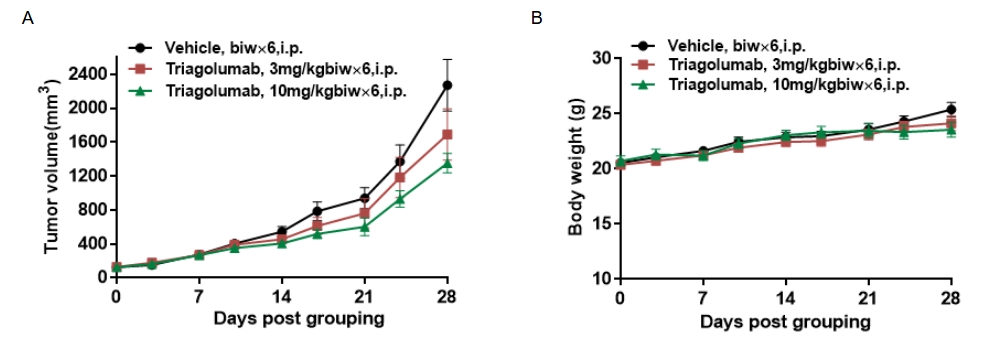
Antitumor activity of anti-human TIGIT antibodies in B-hTIGIT mice. (A) Anti-human TIGIT antibodies inhibited MC38 tumor growth in B-hTIGIT mice. Murine colon cancer MC38 cells (5ⅹ105) were subcutaneously implanted into homozygous B-hTIGIT mice (female, 8-week-old, n=6). Mice were grouped when tumor volume reached approximately 150±50 mm3, at which time they were treated with anti-human TIGIT antibodies with different doses and schedules indicated in panel. (B) Body weight changes during treatment. As shown in panel A, anti-human TIGIT antibodies were efficacious in controlling tumor growth in B-hTIGIT mice, demonstrating that the B-hTIGIT mice provide a powerful preclinical model for in vivo evaluation of anti-human TIGIT antibodies. Values are expressed as mean ± SEM.
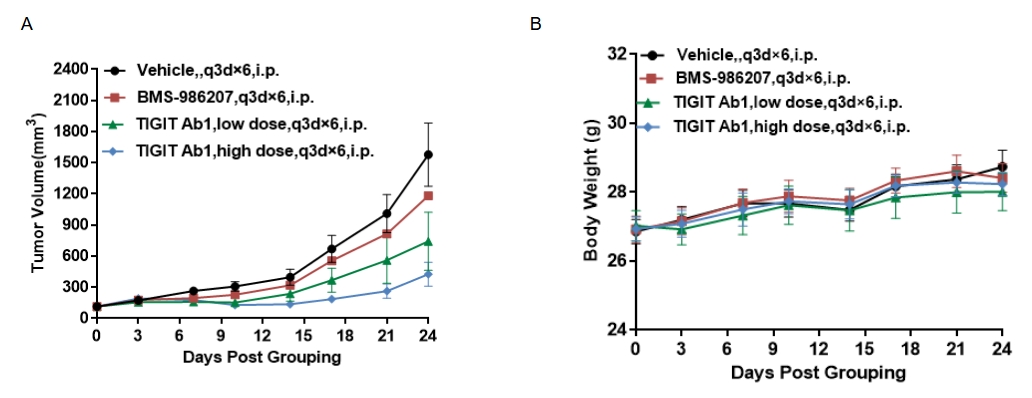
Antitumor activity of anti-human TIGIT antibodies in B-hTIGIT mice. (A) Anti-human TIGIT antibodies inhibited MC38 tumor growth in B-hTIGIT mice. Murine colon cancer MC38 cells (1ⅹ106) were subcutaneously implanted into homozygous B-hTIGIT mice (female, 7-week-old, n=7). Mice were grouped when tumor volume reached approximately 150±50 mm3, at which time they were treated with two anti-human TIGIT antibodies and schedules indicated in panel. (B) Body weight changes during treatment. As shown in panel A, anti-human TIGIT antibodies were efficacious in controlling tumor growth in B-hTIGIT mice, demonstrating that the B-hTIGIT mice provide a powerful preclinical model for in vivo evaluation of anti-human TIGIT antibodies. Values are expressed as mean ± SEM.